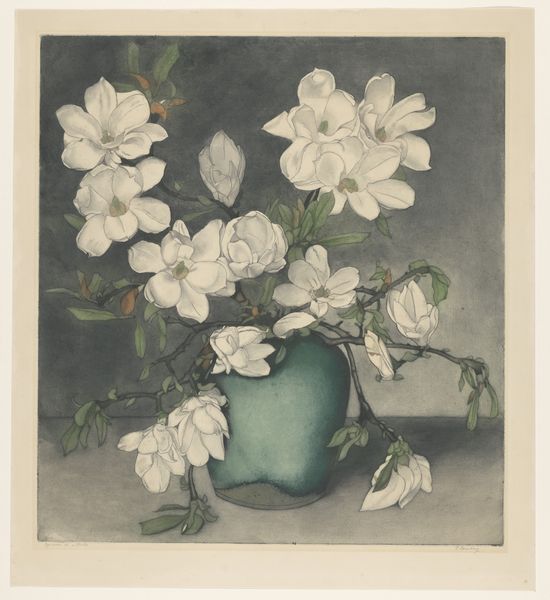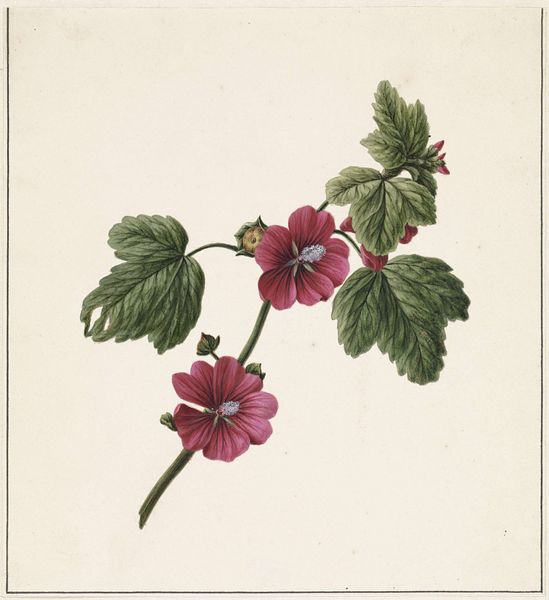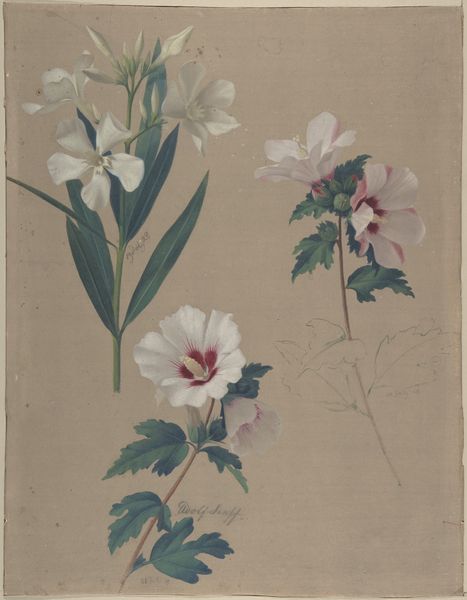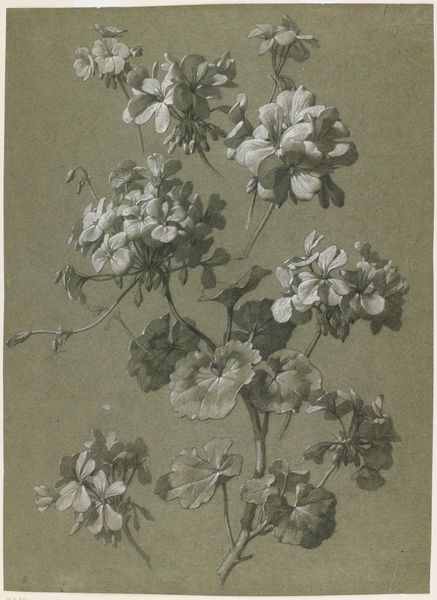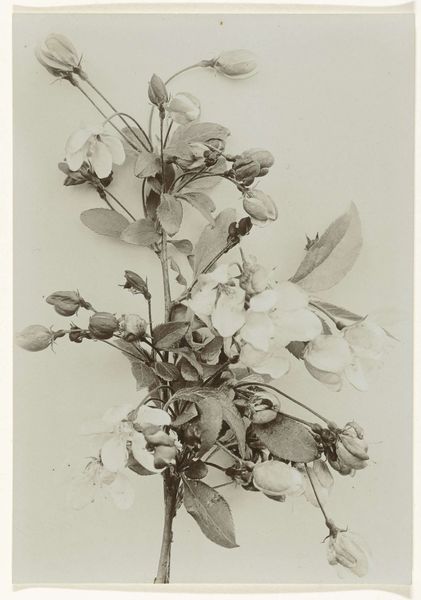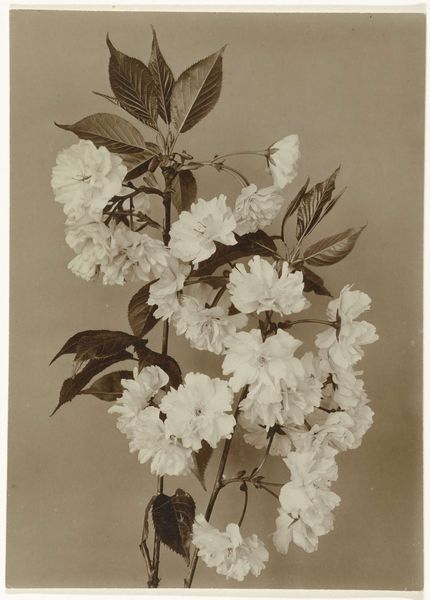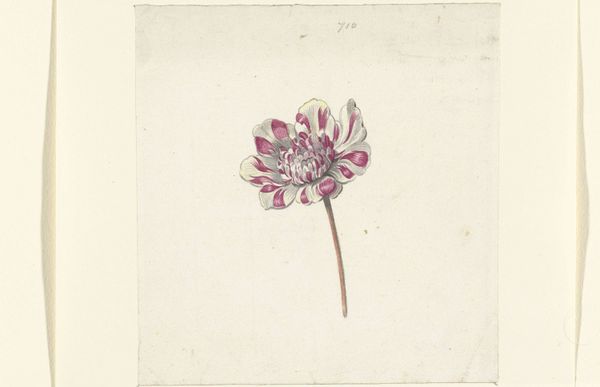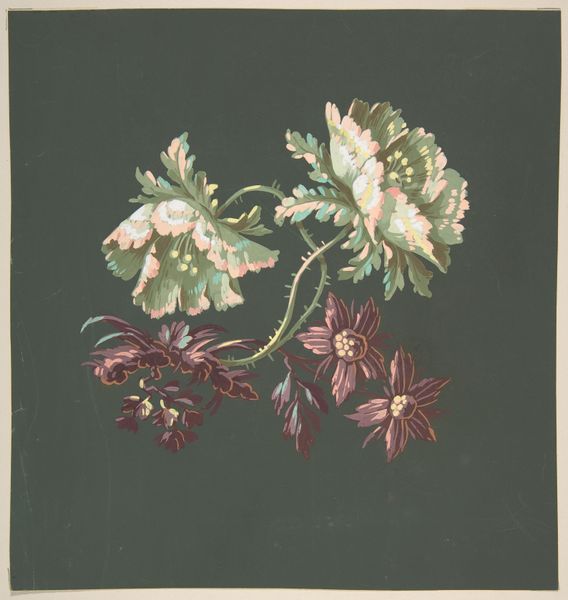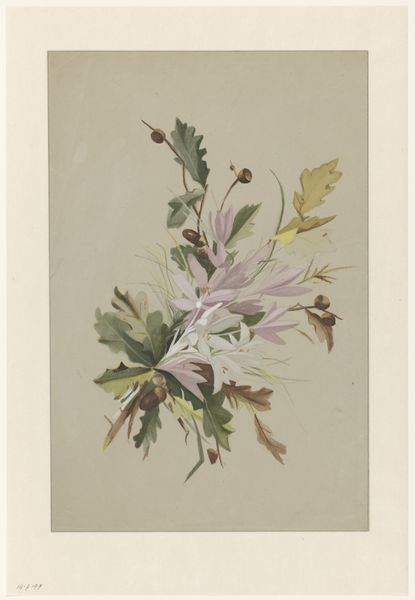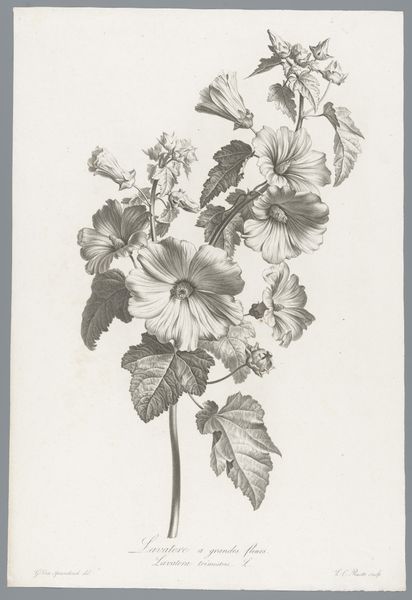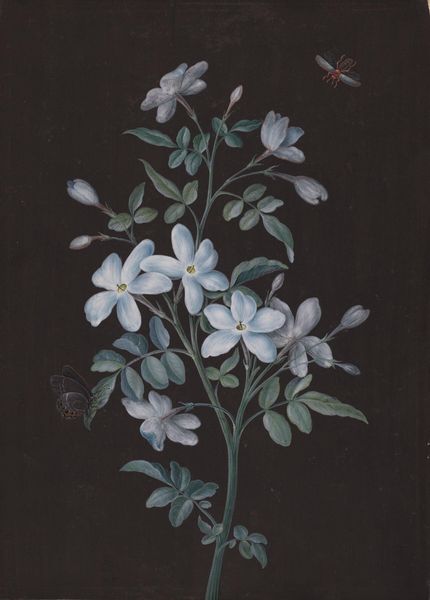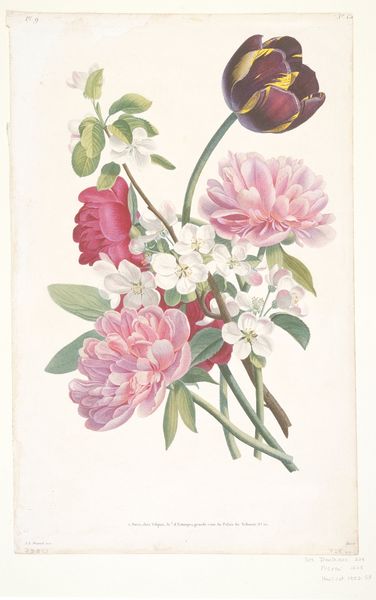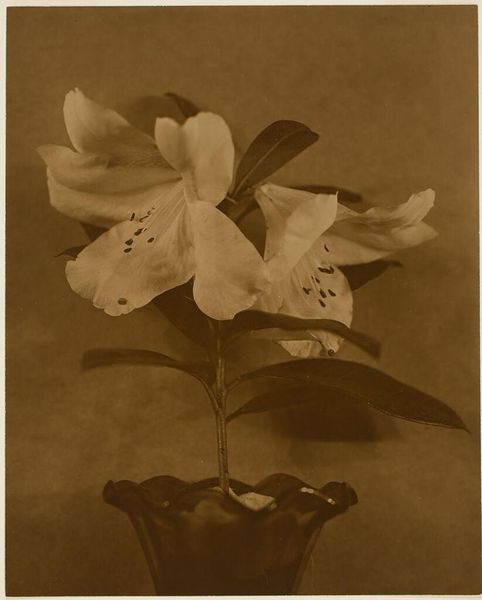
drawing, print, paper, pencil
#
drawing
# print
#
paper
#
floral photography
#
botanical photography
#
romanticism
#
pencil
#
botanical art
#
realism
Dimensions: height 223 mm, width 184 mm
Copyright: Rijks Museum: Open Domain
Editor: So, this is "Pelargonium album bicolor" by M. de Gijselaar, created around 1830. It's a print and drawing, utilizing pencil on paper. The flower itself looks very delicate and almost ethereal against that dark background. How do you approach a piece like this? Curator: Considering a materialist perspective, I find myself drawn to the production and consumption aspects. These botanical prints weren’t just artistic expressions; they were commodities. The paper, the pencils, even the specialized printing techniques - all relied on resource extraction, labor, and established trade routes. Think about the social and economic context that made the creation and distribution of such an image possible. Editor: That's a really interesting way to frame it! I was just thinking about the artistry, but what you're saying makes me think about colonialism and the sourcing of materials for artmaking during this time period. Curator: Precisely! This delicate floral image belies the complex web of material realities. Even the romantic style connects. It's an aesthetic that simultaneously celebrates nature while contributing to its commodification. Look closely, can we discern something about the production process from the object itself? The paper looks handmade, do you think the artist would have prepared their own materials? Editor: I hadn't considered that... The level of detail suggests a very deliberate process, right down to the paper itself. It makes me wonder about the artist's relationship with their materials and the role of their studio assistants, if any. What labor went into creating something so seemingly simple? Curator: Exactly! By considering these material factors, we can challenge the notion of the artwork as solely a product of individual genius, and recognize the broader social and economic forces that shape artistic production. Editor: I’ve never thought of botanical illustrations in that light before. It’s shifted my understanding of not just this image, but others from the same era. Thanks!
Comments
No comments
Be the first to comment and join the conversation on the ultimate creative platform.
